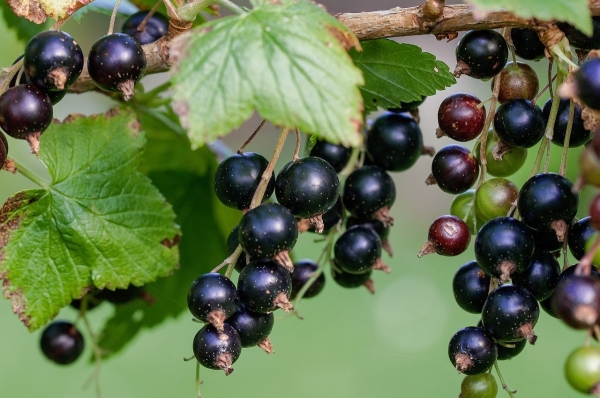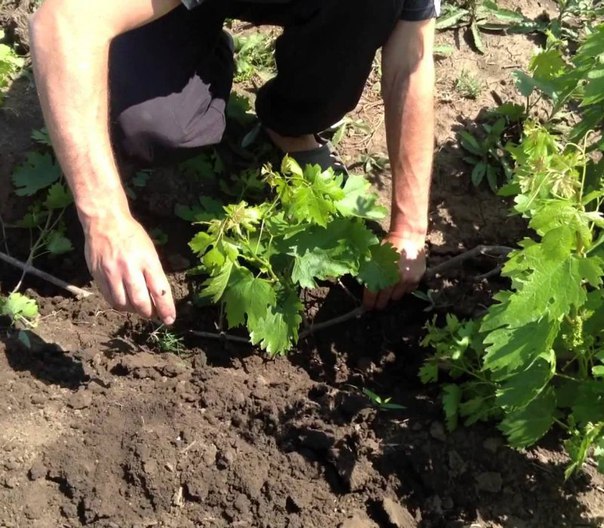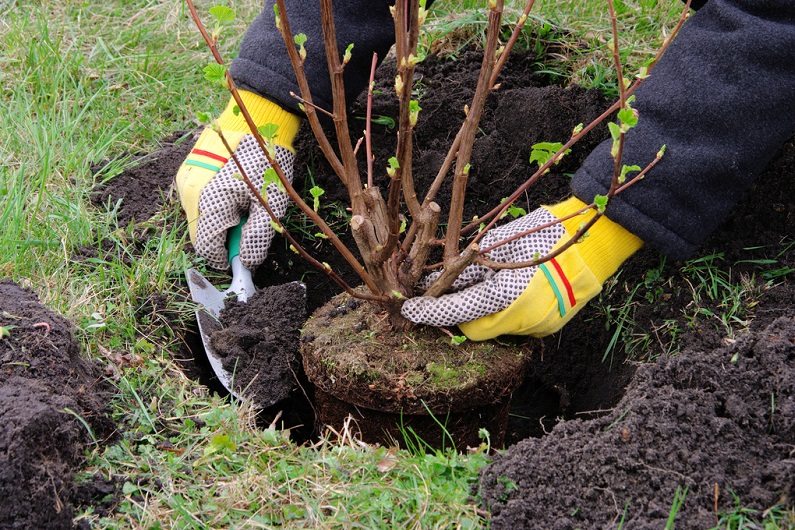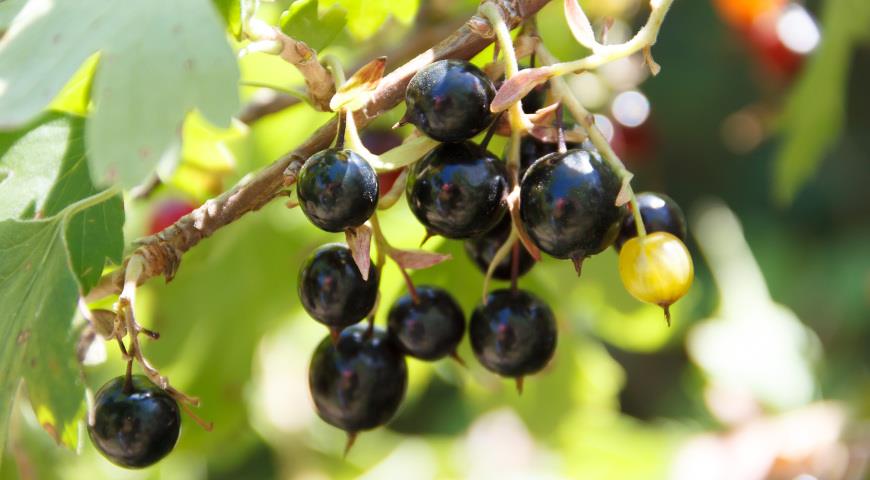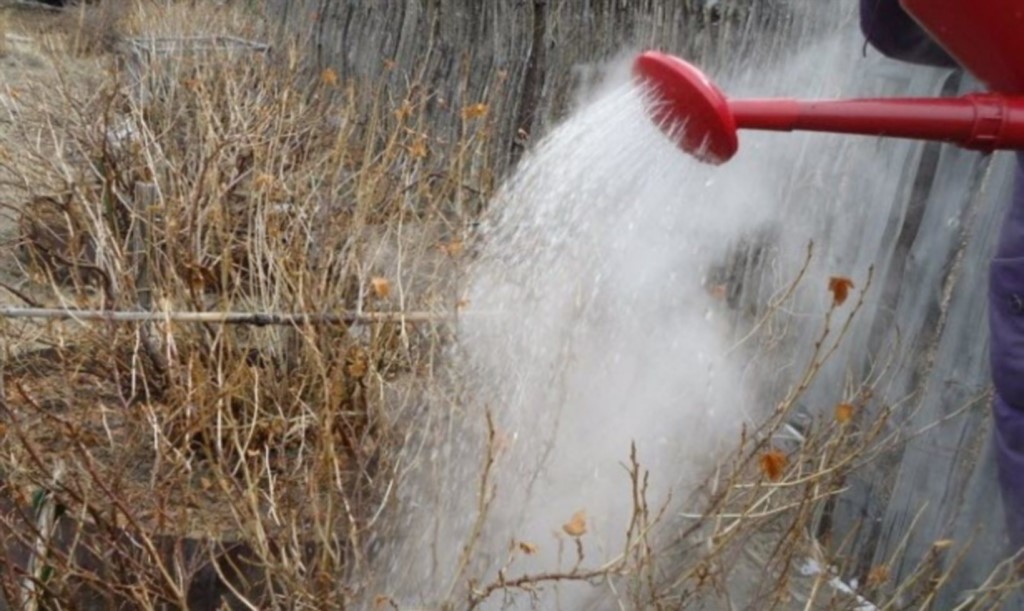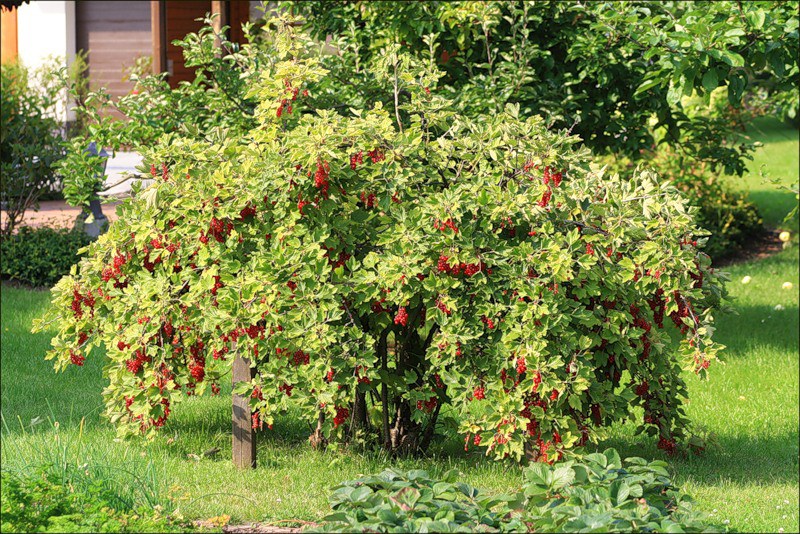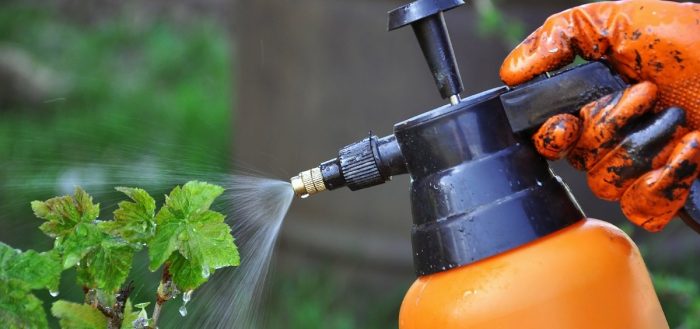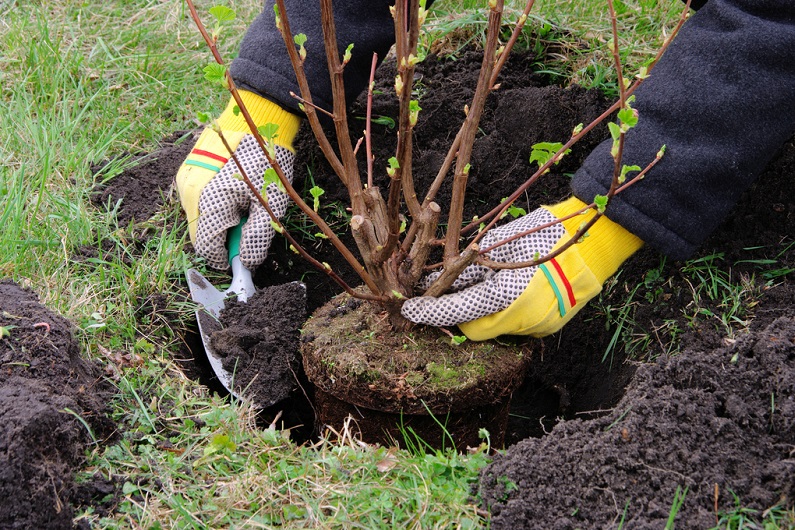Content:
This procedure is practically mandatory. If it is not produced, then the leaves on the currant bush begin to turn yellow and quickly fall off, since they lack nutrients. In addition, the berries become small, their taste deteriorates, new shoots do not appear, which also leads to a decrease in yield. Transplanting currants can be done in spring or autumn. Each option has its advantages and disadvantages, but most gardeners are convinced that replanting the plant should be carried out in the spring. At this time, the likelihood of damage to the bush is less, and if all recommendations and rules are followed, it remains possible to get a crop in the current year.
Reasons for transplanting currants
Transplanting currants in the spring to a new place is usually done in the following situations:
- The need to propagate a favorite black or red berry variety. To do this, you can bend the branch to the ground, wait until it takes root, and then cut off the branch from the main bush, dig it up and plant it in a new place. The second way is to separate part of the growing bush and plant it in another area. As a result of such manipulations, instead of one bush of berries, the gardener will have two that will bear fruit equally;
- Separation of diseased plants from healthy ones. If one of the bushes gets sick, and its treatment with chemical and organic means did not work, it is recommended to plant it so that it does not infect a healthy berry. For this, the plant is also dug up and transplanted into a new territory;
- Excessive development of culture (bushes interfere with the normal growth of each other). This situation leads to a decrease in yield, since the branches of plants block the light to each other, a shortage of necessary substances may arise in the soil, and so on. The solution is also to transplant currants;
- Changing the layout of the site. For this reason, a decision is also made quite often to transfer currants. In addition, it is recommended not to violate the rules of crop rotation and periodically change plantings and plants in places so as not to impoverish the soil (the process of soil restoration is very laborious and expensive).
Features of transplanting in spring
Many gardeners and gardeners are interested in the question: when can currants be transplanted to another place. It is recommended to carry out this procedure in the spring or autumn. The main thing that you should pay attention to when transplanting a culture is the state of the plant itself. If you transplant currants in the fall, then the optimal period for this is October or November, when the foliage will completely fall off, so that the plant does not need to spend energy on providing it with nutrients.
In the spring, the deadline for transplanting is May, while the buds have not yet swollen, for the same reasons (so that the plant spends energy only on the development of the root system, and not on ensuring the growth of foliage and ripening of currants).
Most experienced gardeners prefer to transplant currants in the spring, since at this time the plant is not so stressed (the movement of juices along the branches has not yet begun, which means that the probability that the culture will take root is higher). Before the spring transplant, you should look at the temperature of the earth. As soon as it reaches 5 degrees above zero, work can be done.
To increase the survival rate of the bushes, you should not shake off the soil from the roots of the plant. In addition, after planting, mulching the holes with sawdust or grass and feeding the bushes with fertilizers containing potassium will be useful. The addition of humus and other similar organic substances to the soil during transplantation increases the survival rate. Correct watering is carried out with water with a temperature of about 20 degrees Celsius, otherwise the roots may freeze and the plant will not take root. Therefore, for irrigation, it is recommended to stand the water in separate containers in the sun.
Preparing a new site
After deciding when to transplant currants, you should prepare a place for planting it. First, you need to choose the right site. It should have good sunshine and be spacious enough to give the shrub room to develop. Before transplanting, a pit is prepared so deep that the root system is spacious. The soil should be pre-loosened to ensure free access of air and moisture to the roots. Fertilizers must be placed in the pit, then water is poured so that planting is carried out in moist soil.
Soil preparation begins two weeks before planting. It must be cleaned of the roots of other plants. The optimal hole size is considered to be a square with sides of 40 centimeters (these parameters are suitable for young shrubs). If the bush is old, then the size of the hole should be determined based on the size of its root system. Typically, it is placed at a depth of 30 to 50 centimeters. When planting several shrubs, you can make a trench, while the distance between the bushes should be about 1.5 meters.
Nitrogen, potash and phosphorus fertilizers contribute to survival and a good harvest. When transplanting currants to areas with acidic soils, it is recommended to add chalk, dolomite or ash to the soil.
An important element of the work is digging out the bush. It needs to be dug around the main branch. The shovel should be stuck to a depth of no more than 50 centimeters so as not to damage the root system. When removing a plant from a hole, it is recommended to pull it near the root. If you hold on to the top, it can break off and the plant will be damaged. After that, the shrub is transferred to a new site and placed in a prepared hole. Before planting, it is recommended to treat the roots with a chemical composition against pests and diseases.
FAQ
There are many nuances about how to transplant currants to a new place in the spring. Gardeners are most often interested in the following features of this process:
- Is it possible to transplant three - and five-year-old bushes? This can be done, it is only necessary to follow the procedure and certain recommendations. Firstly, the shrub is well dug so as not to disturb the roots, and then, together with the soil, is transferred to a new place. Such bushes should be deepened as much as possible into the hole, and the upper part should be trimmed. Good watering after transplantation is critical for the survival of such plants;
- Is it possible to plant young plants where there were old bushes? This is not recommended, since there is a possibility of contamination of seedlings with diseases and depletion of the land;
- What plants are the best neighbors for currants? The best choice for planting next to a berry is onion or garlic, which will protect it from pests and diseases. It is not recommended to plant currants near fruit trees, as they may be in the shade, which will significantly reduce the yield;
- Is hilling necessary when transplanting a shrub in the fall? The procedure can be carried out for insulation. However, in spring, it is better to make the hole even to allow lateral shoots to develop and to avoid frost damage to the plant next winter;
- Is it necessary to cut the ground part of the transplanted bush? It is possible to carry out this procedure, but it will significantly increase the survival time.
Major mistakes
The most common mistake is to plant the bush at the same depth as in the old location. To improve survival, it is recommended to place it in a pit that is 5-7 centimeters deeper than the previous one.
In some cases, the transplanted shrub is not watered enough. After transplanting, watering should be very abundant. Only in this case you can get a high-quality crop of currants in the future.
So, the question of how to transplant currants is rather complicated. First, it is necessary to choose the right time for the procedure (in no case should it be carried out in the summer, when the berries are ripening and the foliage turns green). Secondly, it is necessary to decide which method of transplantation will be used: it is necessary to prepare shoots, graft cuttings or transfer an existing bush. All actions must be carried out as carefully as possible: one wrong movement, and the root system will be damaged. As a result, the plant may even die. It should also be noted that the transplanting process is exactly the same for both red and black currants.
